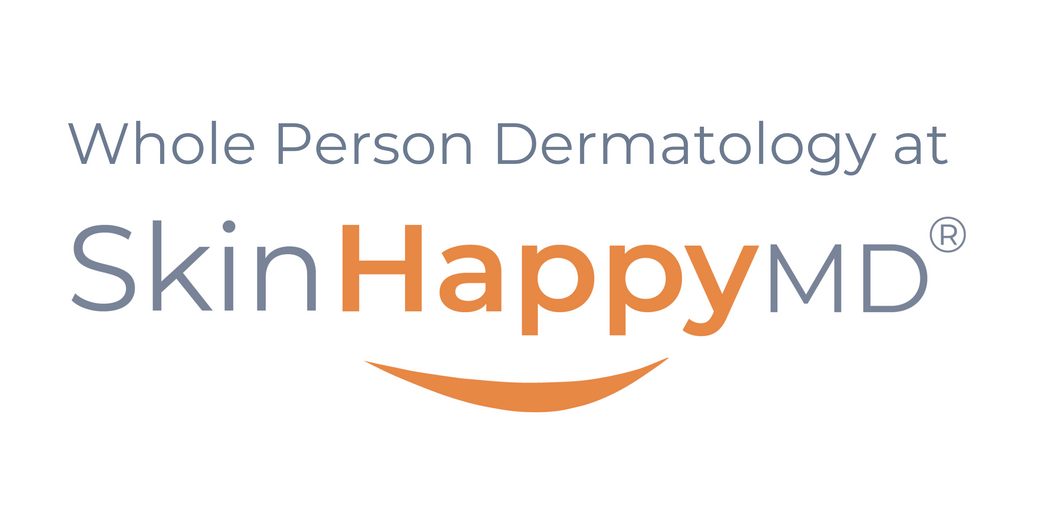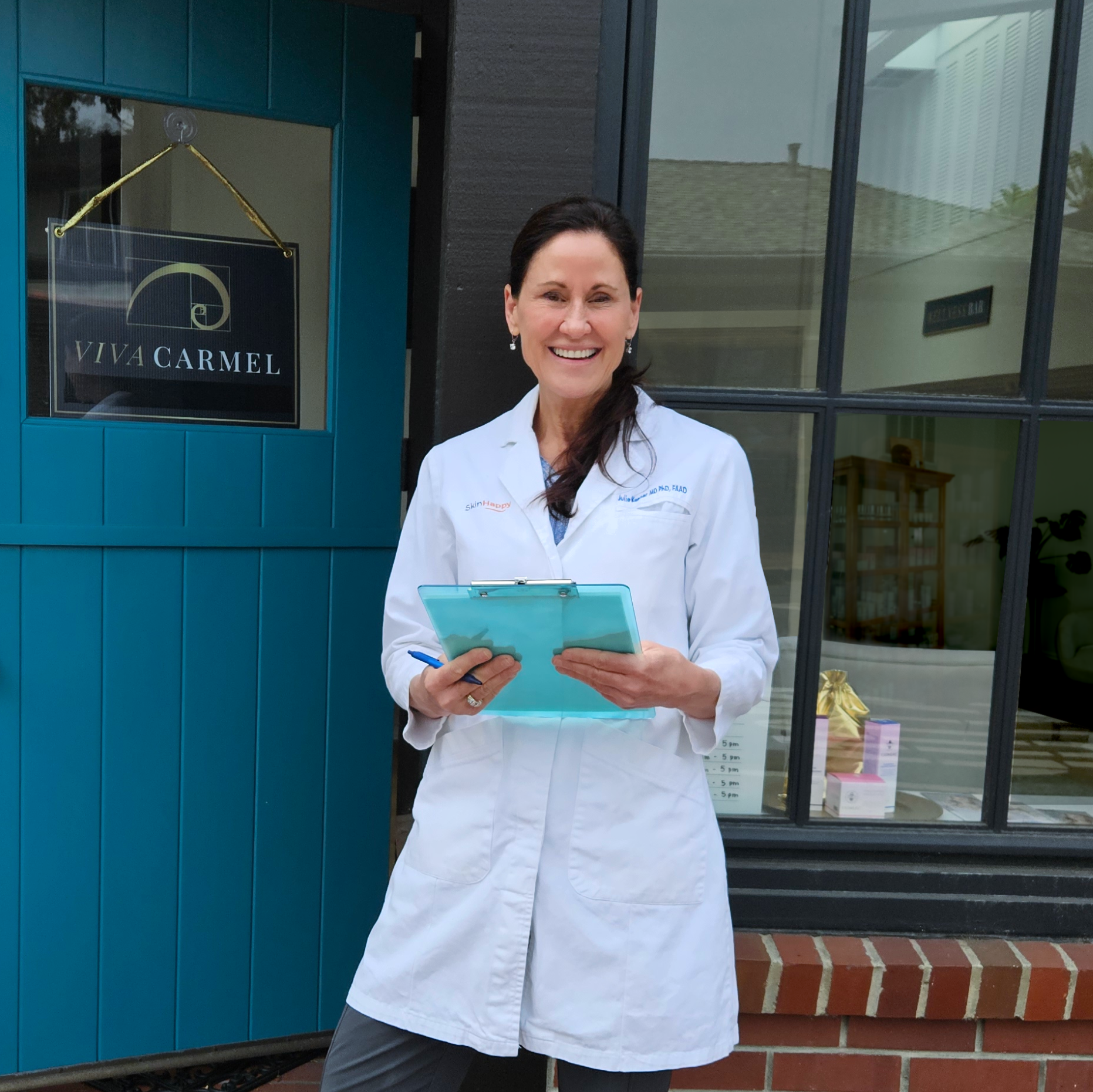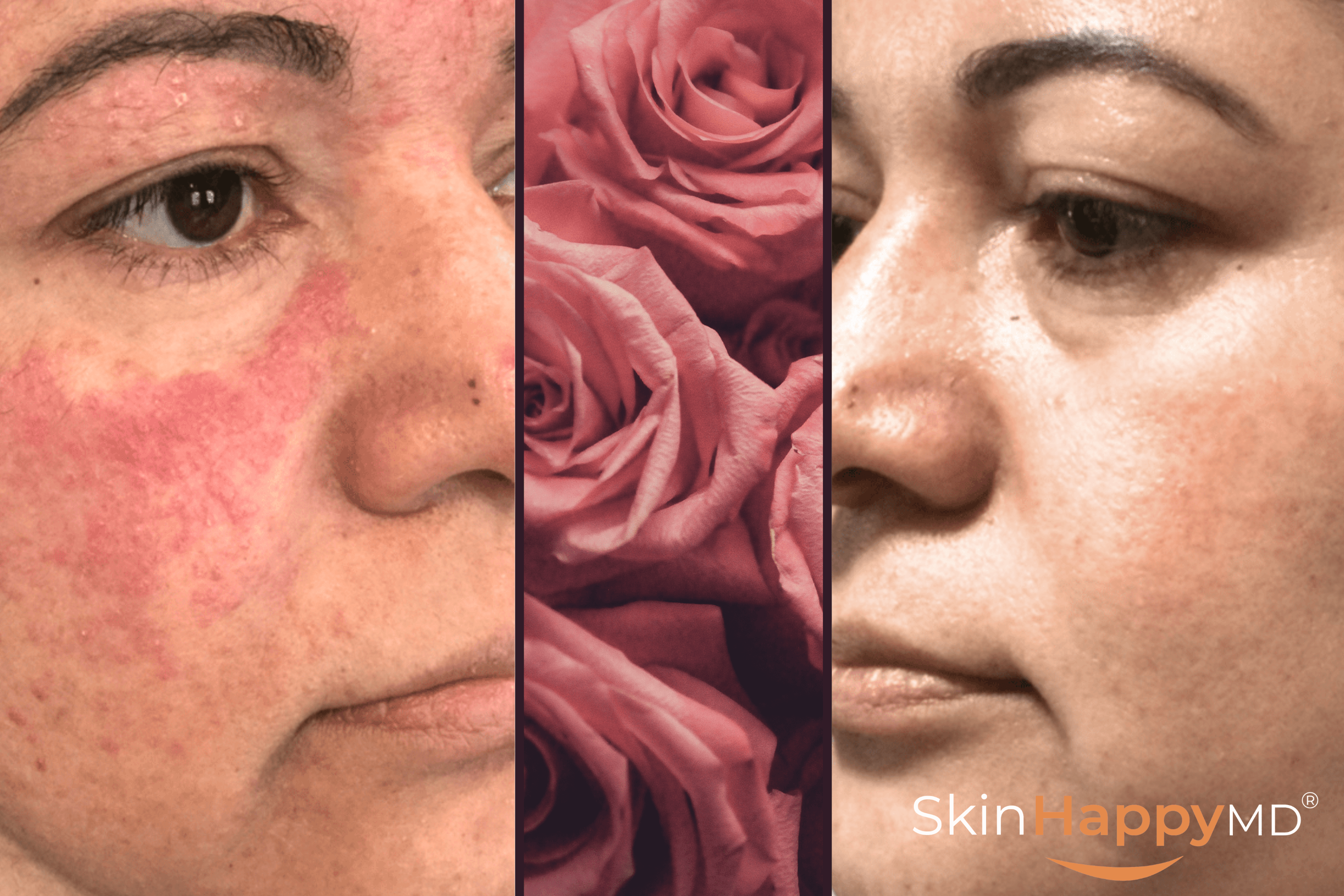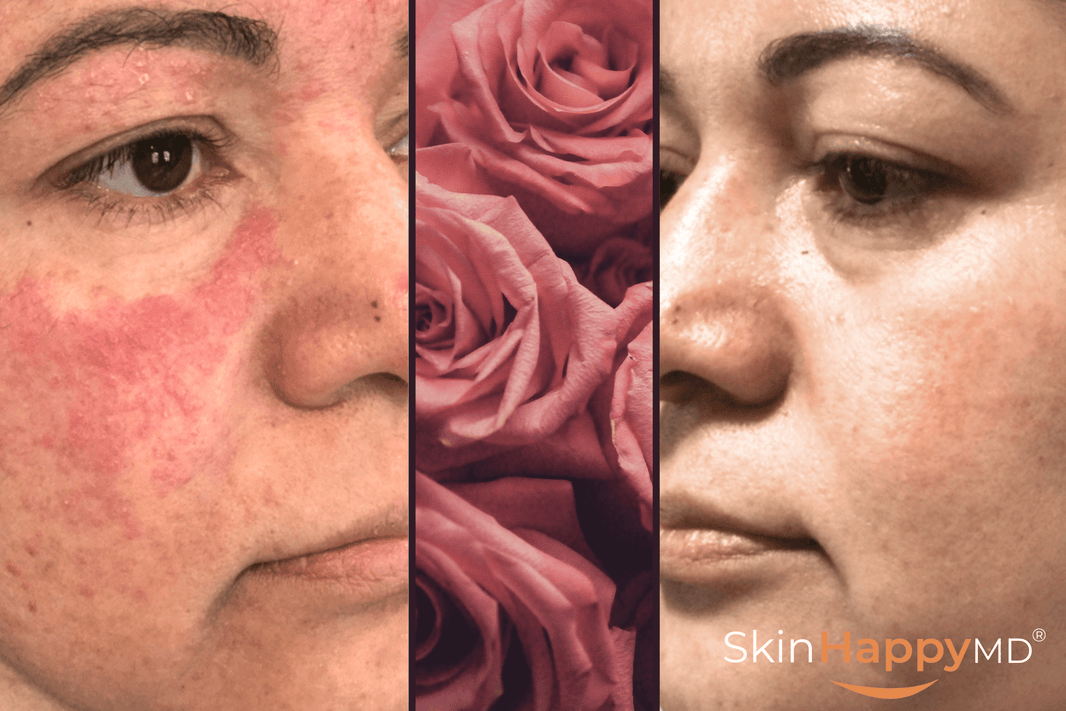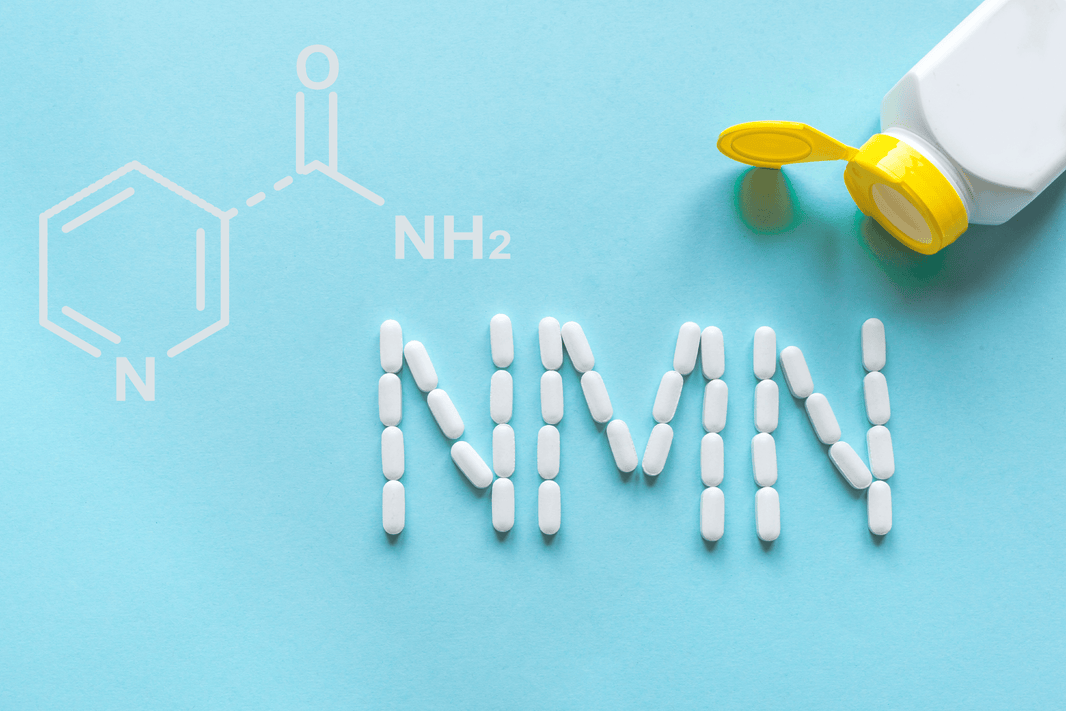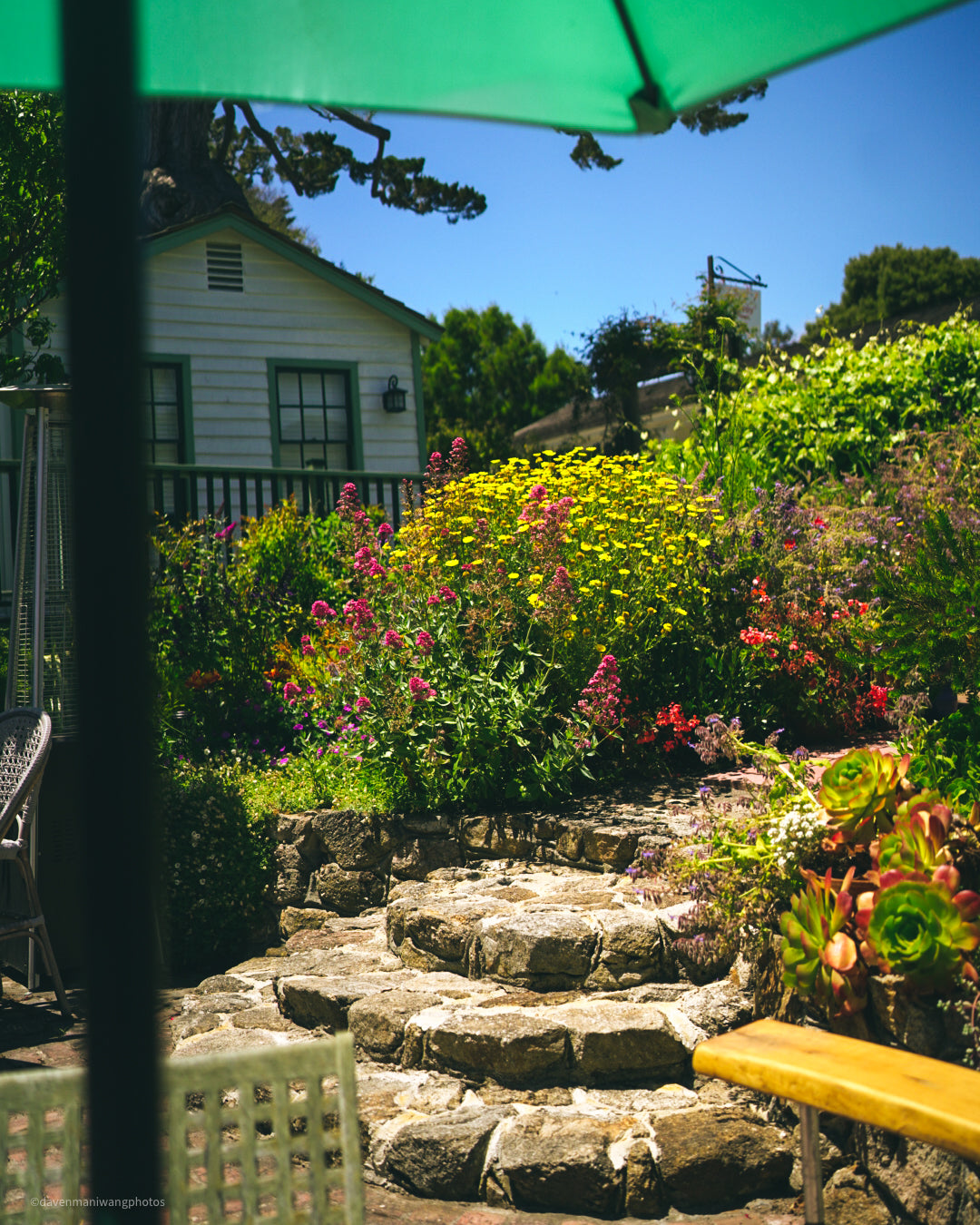Rosacea is one of the most common yet misunderstood skin conditions. According to official estimates, it affects about 22% of the U.S. population, but in our experience, the true number is likely closer to half of all adults. It tends to be more visible in middle to later adulthood, particularly in people with fair skin, although it can occur at any age and affect individuals of any skin type and color.
At its core, rosacea is caused by the hyperactivity of two systems in the skin: the blood vessels and the oil glands. When the blood vessels are overactive, it can cause facial redness, dilated blood vessels, easy flushing and blushing, and acne-like bumps. When the oil glands are overactive, it can cause enlarged pores, pink or yellow, donut-shaped bumps called sebaceous gland hyperplasia, an enlarged nose, known as rhinophyma (which is more common in men), or an oily sheen on the face. Many people experience some combination of these changes. Rosacea most often appears on the face, but can also involve the scalp, neck, chest, or ears.
Rosacea can also affect the eyes and eyelids, a condition known as ocular rosacea that causes redness, swelling, styes, irritation, a gritty sensation, and even blurred vision or vision impairment. The good news is that treating the skin inflammation often helps calm ocular symptoms as well.
Sensitive skin is a hallmark of rosacea. Ingredients such as fragrances, toners, scrubs, or harsh exfoliants can easily make symptoms worse. That’s why the most effective treatments focus on two goals: reducing inflammation and strengthening the skin barrier. By supporting collagen production and protecting the skin’s natural defenses, you can help protect your hyperirritable blood vessels and oil glands from responding to external triggers.
Treating rosacea is more than just a surface or cosmetic issue. When the skin is inflamed for a prolonged period, it can lead to the chronic release of “inflammagens,” inflammatory byproducts that can have negative effects throughout the entire body, influencing the gut, heart, brain, bones, and hormone balance. Effective rosacea treatment reduces your exposure to these harmful byproducts of inflammation.
Diagnosing Rosacea and Identifying Your Triggers
Because rosacea can take so many different forms, often with overlapping symptoms and other underlying conditions, it is essential that you receive a proper diagnosis for effective treatment. For example, papular-pustular rosacea is often mistaken for acne, but it can also coexist with acne. Some treatments that are helpful for one condition might worsen the other, but a dermatologist can help design a plan to effectively treat your unique skin.
Rosacea is a genetic condition, meaning it is built into your skin’s biology and does not have a cure. However, identifying and avoiding your skin’s triggers can help keep symptoms at bay by reducing inflammation. Triggers can be different for everyone, but some of the most common ones include:
- Sun exposure
- Emotional stress
- Hot weather
- Wind
- Heavy exercise
- Alcohol consumption
- Cold weather
- Spicy foods
- Humidity
- Indoor heat
- Menopause
- Certain skin care products, foods, or medications
Since UV light is one of the strongest and most universal triggers, daily sun protection is a crucial step in managing rosacea. UVA rays penetrate clouds, windows, and fog, so sunscreen is important every day of the year. Mineral-based sunscreens containing 8-10% zinc oxide are best, as the ingredients and fragrances in chemical sunscreens are often a trigger for rosacea.
Reframing Rosacea in the Public Perception
Rosacea is not just a cosmetic issue. It can have deep emotional and psychological impacts that are often minimized or overlooked by healthcare professionals. In addition to the intense physical discomfort experienced by people with rosacea and the frustration with identifying triggers and finding skincare products that the skin can tolerate, there is another issue that people with rosacea face: the public perception of the condition.
Sadly, society holds a negative bias against people with rosacea. Studies show that facial redness is unconsciously associated with poor health, habits such as excessive drinking, or even negative personality traits. This bias is deeply unfair, and yet it affects how people with rosacea are perceived socially and professionally. It’s no wonder that many sufferers report feelings of embarrassment, sadness, or depression and avoid social contact during their flare-ups.
If you or someone you know is struggling with rosacea, it’s important to find a dermatologist who takes the condition seriously, both medically and emotionally. While rosacea isn’t curable, it can be controlled, and in many cases, the symptoms can become minimal or even unnoticeable.
Managing Rosacea by Supporting Skin Strength
There’s no single cure for rosacea, but there are many effective ways to manage it. With proper treatment, the skin can often look and feel much calmer, and flare-ups can become far less frequent.
Think of rosacea like a train. Medical treatments can modify the speed or direction of the train. Topical and oral medications, as well as regenerative therapies that calm inflammation and rebuild the protective collagen surface of the skin, can slow the train. Targeted blood vessel treatments, including laser therapy to destroy vessels or needling with low-dose neurotoxin to reduce vessel dilation, can bring the train to an earlier station. However, because rosacea is genetically based, it cannot be cured entirely; the train cannot be stopped completely.
If you’re ready to take the next step in calming your rosacea-prone skin, schedule your appointment with Dr. Kenner at SkinHappy today for expert, empathetic care. Our whole-person approach to dermatology will help support all dimensions of this complex condition, leaving you with the relief and confidence you deserve.

